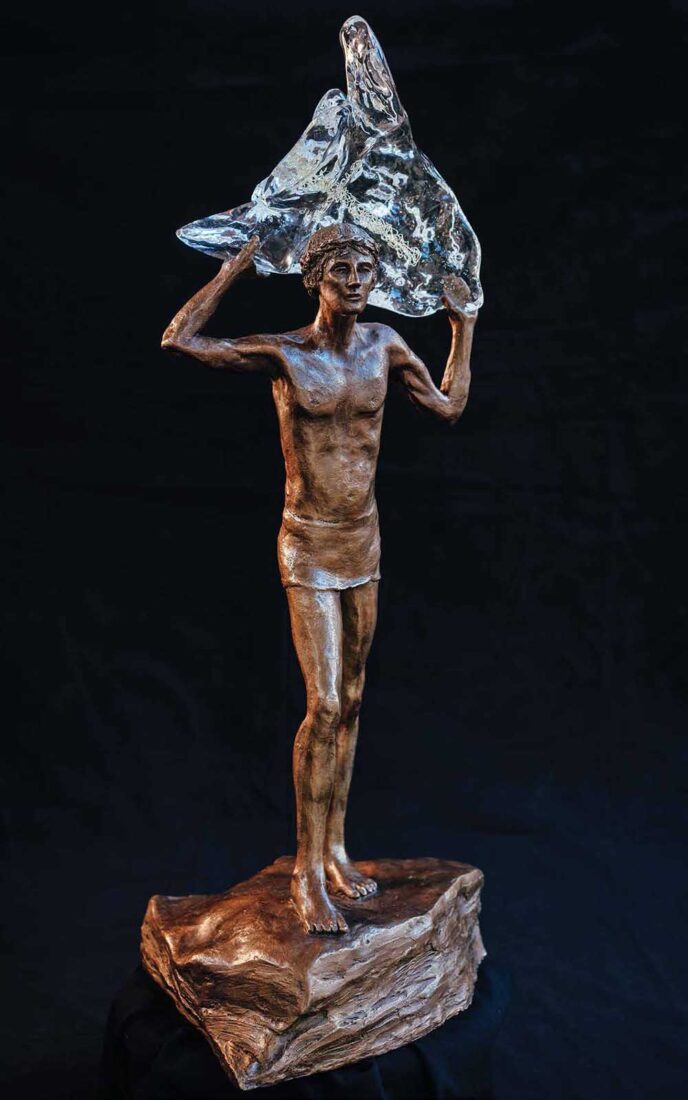Written by Linda Nicholls
In these few words of the final condemnation of Jesus we are drawn into the power of systems that pull people into a centrifugal vortex of destructive actions. This story is not just about Pilate as an individual. It is about a man caught in the political tensions between the religious fervour of an oppressed people and keeping the peace away from the eye of Roman interference. It is about an oppressed people balancing the fears of that oppression with sufficient freedom for religious leaders to maintain their identity. It is about Chief Priests who walk the line between the power of Caesar and their vocation under God in the face of fear and uncertainties.
It is about Jesus choosing faithfulness to the way of God’s love, forgiveness and grace in the face of the principalities and powers around him.
The power of these tensions has grown around Jesus—one who gives to Caesar what belongs to Caesar but is clear about what belongs to God. His life and witness have exposed the compromises of some religious leaders while challenging the inflexibility of others in the name and healing power of loving neighbour as self. Jesus has challenged religious systems that will not bend to give life.
Those systems resist Jesus in the name of order and the greater good, for it is always easier to blame the disrupter than to change.
Jesus is a disrupter for his voice challenges expectations and embedded privileges. Loving one’s neighbour as one’s self includes the refugee, the homeless, the addicted, the business executive, the transgender colleague, those who have violated the rules of the system and those who have not, the whole diversity of humanity. It includes healing on the Sabbath and consorting with those considered the least or sinful. In the face of growing opposition Jesus remained steadfast in his witness of forgiveness, healing, and grace whether it fit the expectations around him or not. It brings him face to face with death in this exchange with Pilate and he does not flinch or evade it.
Pilate briefly tries to extricate himself from this dilemma but the pressures on him are too great. A chanting crowd demands crucifixion and Pilate aquiesces even as he declares Jesus innocent.
Jesus carries the cross to his own crucifixion—a cross given to him by systems that could not bear to be challenged or reshaped. He did not choose martyrdom. It was the consequence of his commitment to God’s way and even in the face of death he will not betray that commitment.

Throughout the centuries since the crucifixion, followers of Jesus have wrestled with the call to bear the cross—not chosen for itself—but because it is the consequence of faithfulness to the way of God in the face of all other powers and systems. Sometimes we cannot bear the cost and slip aside to join the crowds resisting change. At other times followers of Jesus stand firm and faithful even in the face of vilification and death, trusting in the greater truth witnessed in the resurrection, that nothing can separate us from the love of God. Some are known as saints for the strength and courage of their witness that inspires future generations.
To bear the cross is the call to vulnerable faithfulness that resists the pull of the powers around that would resist grace and transformation where the love of God demands more than religious, political or economic systems will give.
Archbishop Linda Nicholls is Primate of the Anglican Church of Canada.
This essay was originally published in the Crossings Exhibition companion catalogue, which features reflective essays, poetry and the visual art of the exhibit. Crossings Toronto is an all-Canadian series of public art exhibitions located on the streets of downtown Toronto. The artwork takes up the important story of the Passion of Jesus in what is known as the Stations of the Cross. The exhibition invites us to walk that journey and experience something of what Jesus experienced through the artwork. Crossings is available until Wednesday April 20th. If you live in the Toronto area, go check it out. Get walking directions and read more about each art piece here.










